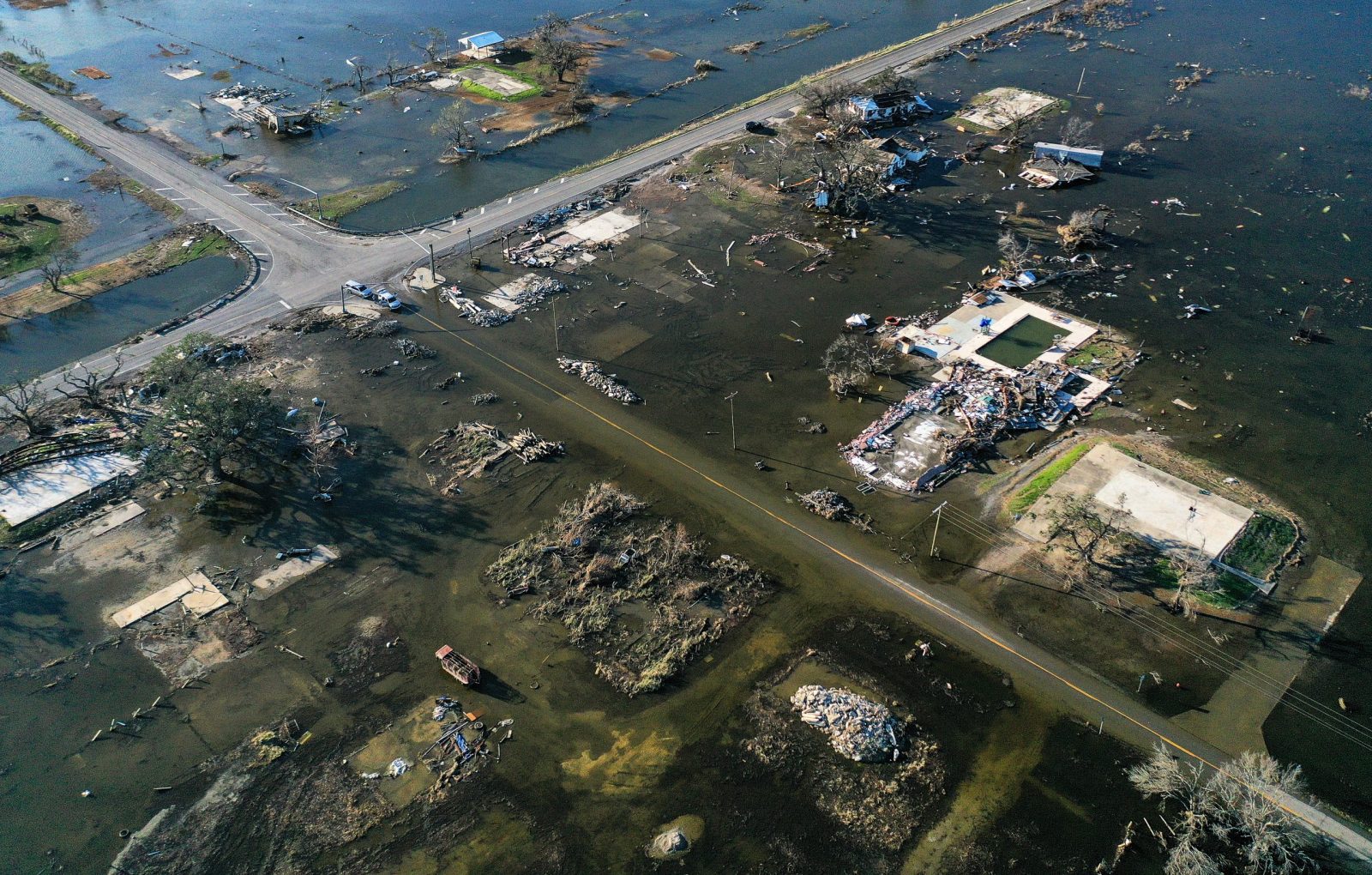Flood Insurance Finally Acknowledges Climate Change

An aerial view of flood waters from Hurricane Delta surrounding structures destroyed by Hurricane Laura in Louisiana. To protect their communities, local leaders could develop and enforce building codes and land-use regulations to reduce future flood-related losses.
Photo: Mario Tama/Getty Images
The U.S.’s Federal Emergency Management Agency (FEMA) is about to introduce risk-based premiums for its National Flood Insurance Program, a major shift in how it prices flood risk, via a new methodology called Risk Rating 2.0.
With Risk Rating 2.0, FEMA recognizes the need to take advantage of more accurate data on the likelihood of floods and the likely resulting damage to property. Using this data, FEMA will then set premiums based on risk and convey this information to residents.
Risk-Based Premiums
By making this change, the National Flood Insurance Program should be able to cover catastrophic losses without having to borrow funds from the U.S. Treasury, as they have done after many severe hurricanes in recent years.
Risk-based premiums can also incentivize property owners to invest in loss reduction measures that would lower the cost of insurance, reflecting lower expected claims in the future.
Challenges in adhering to these principles may arise from cognitive biases and budget constraints that lead residents in flood-prone areas to not want to purchase insurance voluntarily nor invest in measures to reduce future damage to their property. Recognizing these biases is the first step in designing strategies for addressing them. Risk Rating 2.0 is built on three guiding principles.
Insurance Premiums Need to Be Risk-Based
When insurance premiums are risk-based, they signal to consumers the degree of hazard they face, whereas highly subsidized insurance may lead homeowners to believe that they are unlikely to suffer damage from future floods or hurricanes. Thus, they may feel that they do not need to invest in loss reduction measures.
This myopia bias also discourages individuals from making long-term financial investments in flood protection that would provide benefits over the life of the property. Instead, homeowners tend to focus on the immediate high upfront costs of these measures.
To address this bias, FEMA or banks could provide low-interest home improvement loans to spread the cost of flood protection over a long time period.
To protect their communities, local leaders could develop and enforce building codes and land-use regulations to reduce future flood-related losses.
A safer house also means lower insurance costs. It is very likely that the premium reduction would be greater than the yearly loan payment. When homeowners are told that a reduction in damages leads to lower flood insurance premiums to reflect lower expected claim payments, they are likely to realize that the annual savings in their insurance premiums are less than their annual loan cost of the loss reduction measure.
General Public Funding Should Be Used to Address Fairness and Affordability Issues
If Risk Rating 2.0 is implemented, premiums will increase for some residents. Recent history indicates that these homeowners will feel that these rates are unfair and will complain to their Congressional representatives. Low- and middle-income individuals who have been paying subsidized rates are likely to view a risk-based insurance premium as too costly.
However, financial assistance can make the premium affordable, and long-term loans to incentivize individuals to invest in mitigation measures can reduce the cost of insurance. In addition, FEMA has recognized the need for public sector funding by advocating means-tested vouchers or tax credits to address affordability concerns.
President Joe Biden’s proposed budget for 2022 provides $358 million next year to help low-income households buy flood insurance and fortify their properties against flood damage.
Develop Risk Management Strategies Before the Next Disaster
To protect their communities, local leaders could develop and enforce building codes and land-use regulations to reduce future flood-related losses. The Community Rating System of the NFIP encourages communities to implement these flood reduction measures by reducing premiums to residents. Local leaders are often reluctant to propose these measures because they fear it will reduce economic development and decrease local tax revenue.
Their concerns are reinforced by two biases: inertia (a desire to maintain the status quo) and optimism (why worry about the small chance of flood-related damage?).
To address this behavior, FEMA can provide data on how climate change will reduce future property values due to more serious floods and hurricanes if regulations and standards are not established and enforced. Those in harm’s way are more likely to take note of the risk they face if told that a severe hurricane or flood with a 1 percent likelihood of occurring next year means that there is a greater than a 1-in-4 chance of experiencing at least one of these disasters in the next 30 years. The probability of such catastrophes in the future will be even higher given sea level rise and more intense hurricanes due to climate change.
Risk-based premiums coupled with measures to deal with affordability and fairness issues in concert with homeowners and communities undertaking loss reduction measures will make hazard-prone areas safer.
As a result, the costs of disaster assistance following the next flood-related disaster will be reduced, thus saving taxpayer dollars. For these reasons, it is important for Congressional representatives to support Risk Rating 2.0 and for state and local leaders to embrace its principles.





